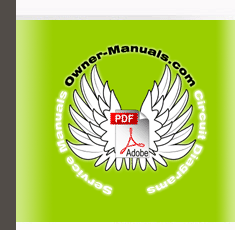|
|
|
Categories
|
|
Information
|
|
Featured Product
|
|
|
 |
|
|
There are currently no product reviews.
 ;
Actually, I was looking for this information for 3 years!...now thanks to you, the manual is on my hands and of great help, cause I understand now where I was doing wrong connections and wires...excellent, I'll be back to you if in need, thank you.
 ;
This manual covers the main equipment features only. While it also includes the procedure for saving and loading from the now long obsolete memory cards it does not mention the how to operate with the optional floppy drive interface so I am still at a loss about how to use this! Note that there is a separate manual covering the MIDI interface and programming via the keyboard, not included in this download. You will also need to get hold of this if you want to use the MIDI interface properly. Basically there is little difference between this manual and the free to download manual for the similar PR60 model.
 ;
Good list of manuals. I found a very rare one and easily get. Should be promptly to download, as we must to wait hours even after confirmed payment.
 ;
The manual was properly scanned and perfectly readable. The only small problem is that I couldn't use my dear Ctrl + F to find a word I needed.
 ;
Nothing wrong with the manual or the delivery - came to me the same day I ordered it. But afterwards I realized that I ordered the wrong manual. Probably better with the Quick start - version. So maybe it would be better if we could see a list with inhold for each manual before ordering?
Selecting and Using Built-in Tones
Using the Pedals
The AP-80R comes equipped with the three pedals shown in the illustration below.
Using the Metronome
1 2
Press the METRONOME button.
� This starts the metronome.
Rotate the dial to select the number of beats per measure.
� Note that you need to select the number of beats per measure with the dial within a few seconds after turning on the metronome. If you don�t, the display will exit the setting screen.
Soft pedal Sostenuto pedal
Damper pedal
Me t r o n ome 0Be a t : 0 0 0 0 0 [ 0]00000000000000
� You can select a value in the range of 2 through 6. With each setting, a chime sounds as the first beat of each measure, and the remaining beats sound as clicks. Specifying 0 as the setting plays a straight click, without any chime. This setting lets you practice with a steady beat.
Pedal functions G Damper pedal Pressing this pedal causes notes to reverberate and to sustain longer. G Soft pedal Pressing this pedal dampens notes and slightly reduces their volume. Only notes played after the pedal is depressed are affected, and any notes played before the pedal is pressed sound at their normal volume. G Sostenuto pedal Like the damper pedal, this pedal causes notes to reverberate and to sustain longer. The difference between the two pedals is the timing when they are pressed. With the sostenuto pedal, you press the pedal after depressing the notes you want to sustain. Only the notes whose keyboard keys are depressed when the sostenuto pedal is pressed are affected.
3
Use the TEMPO buttons to adjust the tempo.
Slower Faster
NOTE � You can also use the dial to change the tempo setting while the current setting is indicated by a value in brackets ([ ]) on the display. Example: [T=120] � The value indicates the number of beats per minutes. � To return the tempo to its initial default setting, press the TEMPO and buttons at the same time.
4
To stop the metronome, press the METRONOME button again.
429A-E-011A
E-9
9 04.8.26, 3:44 PM
AP80R_e_01-16.p65
|
|
 |
> |
|
|
Parse Time: 0.181 - Number of Queries: 137 - Query Time: 0.042
